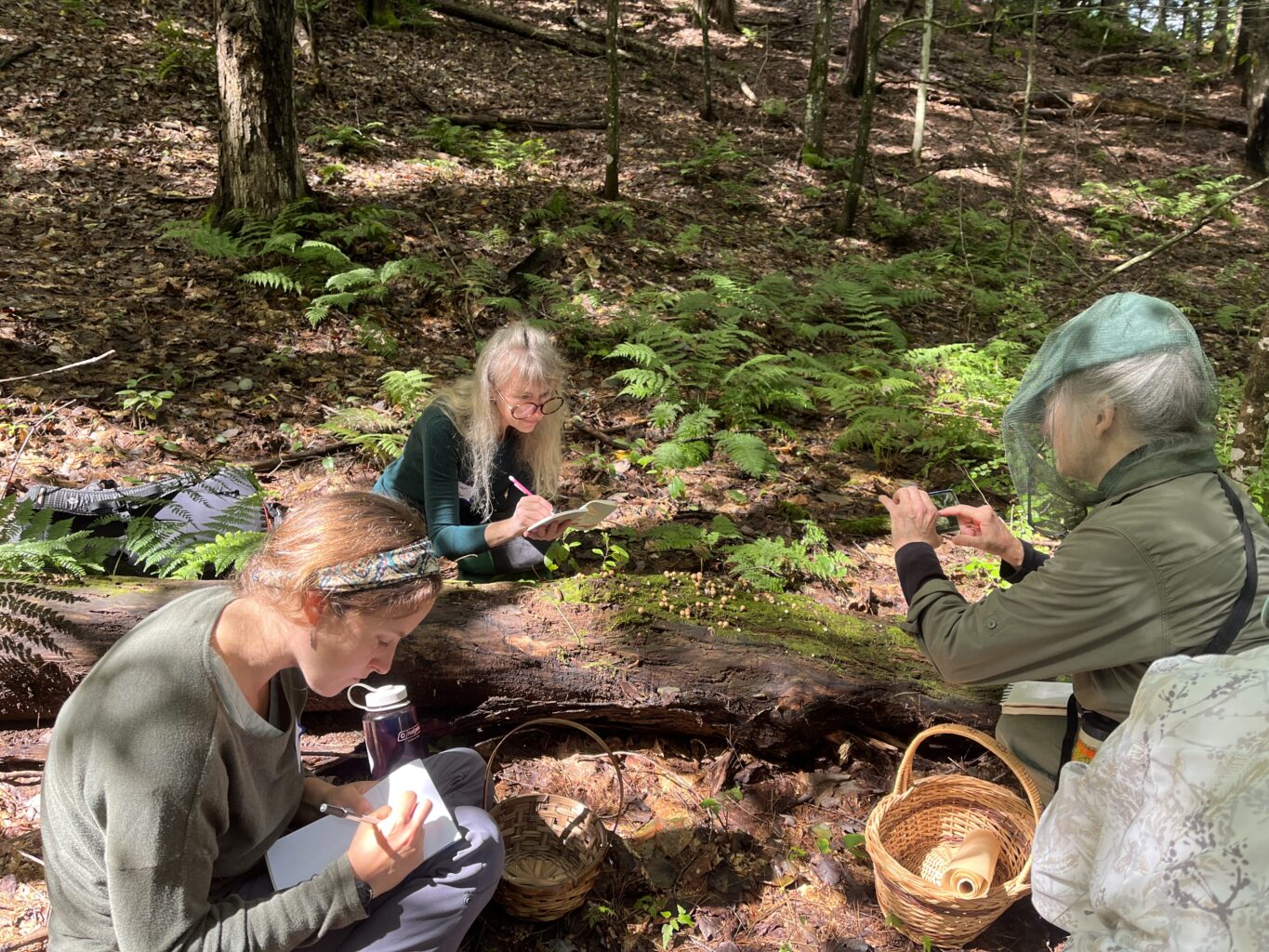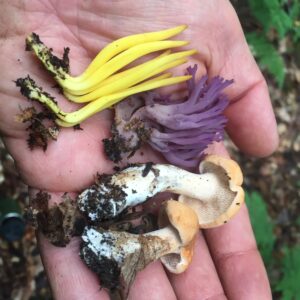In Search of Vermont’s Fungi

By Dave Muska, Teacher-Naturalist
It’s warm late summer’s day and fields are abuzz with the gentle call of crickets and soft swaying of goldenrod. As I step from the sun and on to the forest trail, I’m met with the sensations of an entirely different habitat; cool and welcoming. Along the trail I find the curious looking fruiting bodies of the Spindle-Shaped Yellow Coral (Clavulinopsis fusiformis). Their thin projections emerge from below the soil as miniature yellow towers amidst the leaf litter to propel their spores beyond. Further along I find the stunning and majestic Violet Cort (Cortinarius
violaceus) growing from the soil near the base of an Eastern Hemlock tree. The entire mushroom is a deep purple and a sight to behold amidst the drab colors of the forest.
Each of these species is a member of a fascinating and complex collection of organisms in the Kingdom Fungi. More closely related to animals than plants, many fungi produce fruiting bodies, commonly called mushrooms. Borne of the long filamentous collections of cells called mycelium, mushrooms are found in such variety that it’s possible to find all of the colors of the rainbow in a casual afternoon stroll. It is no wonder that mushrooms occupy our curiosity.
 Drawn deeper into this realm we find fungi filling diverse and critical roles. As decomposers they access and release vital nutrients and carbon stores within forest ecosystems. As parasites they assist in maintaining healthy population levels of their hosts, including insect pests. And of course, mycorrhizal fungi are involved in what has been termed the “wood-wide-web”; an intricate and complex set of relationships where fungi are involved in an “exchange” of nutrients with over 95% of vascular plants. Despite our understanding, only 3.5% – 6.5% of fungi on earth have been described scientifically.
Drawn deeper into this realm we find fungi filling diverse and critical roles. As decomposers they access and release vital nutrients and carbon stores within forest ecosystems. As parasites they assist in maintaining healthy population levels of their hosts, including insect pests. And of course, mycorrhizal fungi are involved in what has been termed the “wood-wide-web”; an intricate and complex set of relationships where fungi are involved in an “exchange” of nutrients with over 95% of vascular plants. Despite our understanding, only 3.5% – 6.5% of fungi on earth have been described scientifically.
This year, the State of Vermont accepted a proposal for the state’s first Fungal Scientific Advisory Group (FSAG). Composed of a skilled and diverse group of mycologists, naturalists, ecologists, and professional myco-philes, this scientific advisory group aims to develop and contribute to Vermont’s understanding of fungal diversity.
The Fungi of Vermont Program is a community science-based initiative to contribute to this statewide effort. This approach to cataloging fungi invites participants to upload quality photos of mushrooms and their features to the iNaturalist App. Over time, this information will be used by mycologists and researchers to better understand the fungi present in Vermont. This will help document rare and unique fungi and inform conservation policy and habitat protection through a mycological lens.
So the next time you are out for a walk and find an interesting mushroom, consider snapping a photo and contributing to the Fungi of Vermont Program.

